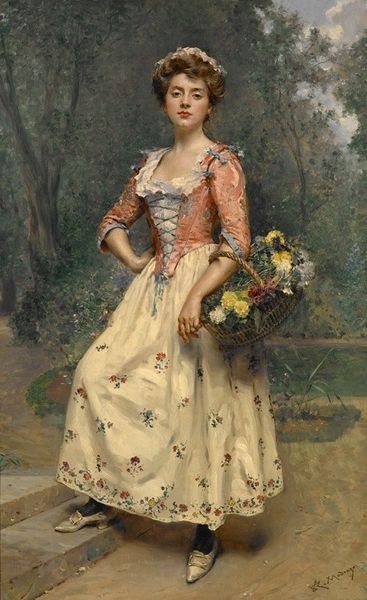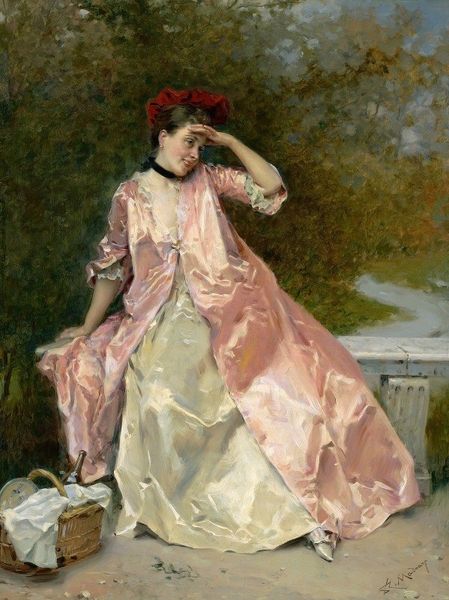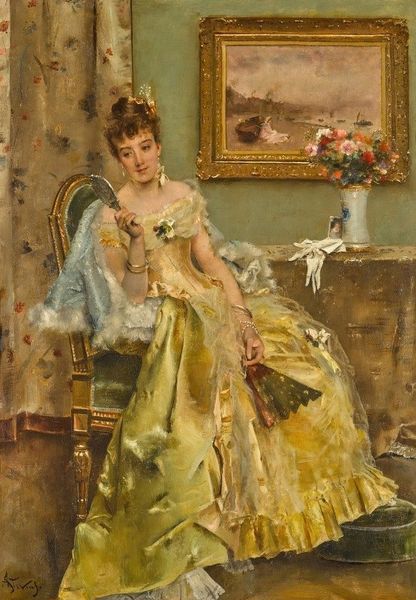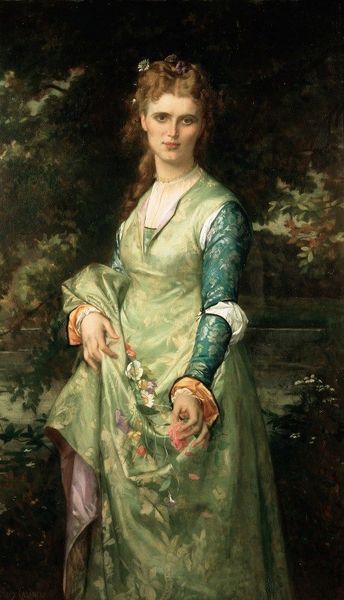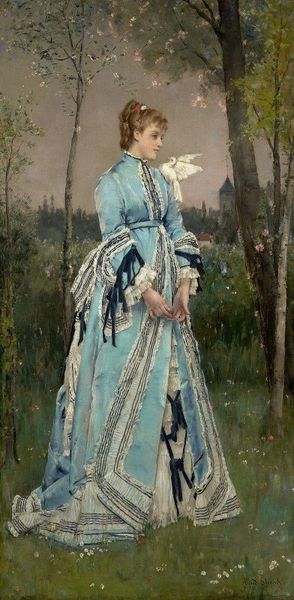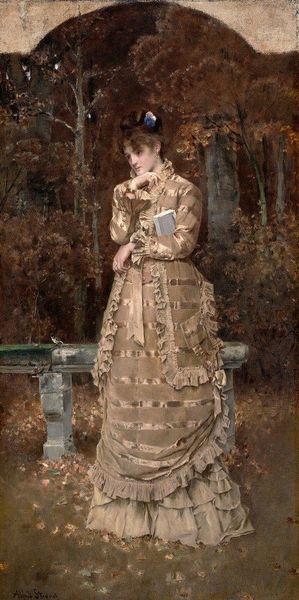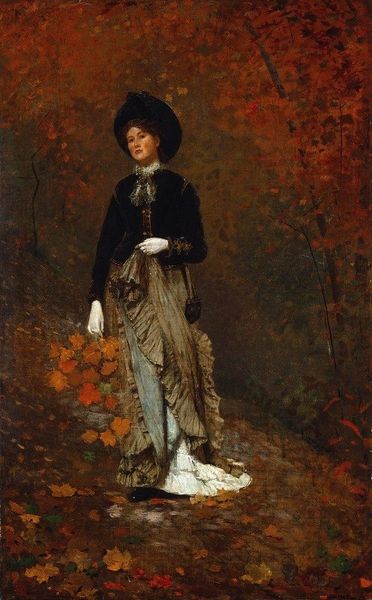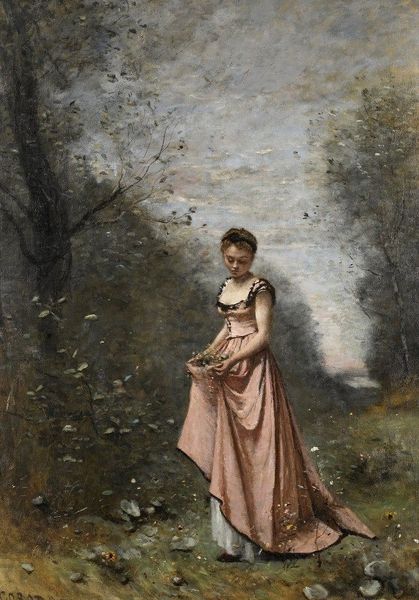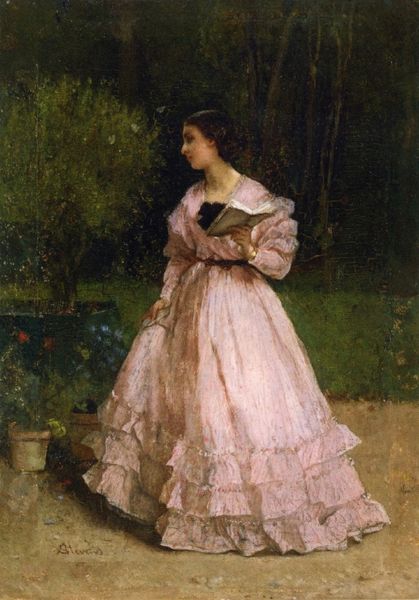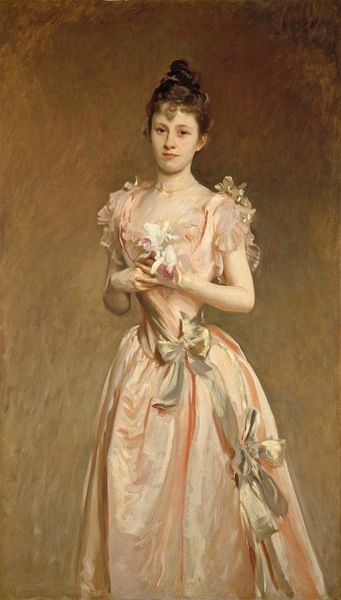
painting, plein-air, oil-paint
#
portrait
#
figurative
#
painting
#
plein-air
#
oil-paint
#
figuration
#
romanticism
#
genre-painting
Copyright: Public Domain: Artvee
Curator: Before us hangs a captivating work entitled "A Walk In The Park" by Gustave Jean Jacquet. Although undated, its stylistic elements strongly suggest it belongs to the Romantic period. The painting, crafted with oil on canvas, portrays a young woman in a park-like setting. Editor: It's lovely, almost saccharine. Her dress dominates the visual space with those large floral patterns, and yet the forest encroaches. What a curious tension. Curator: Jacquet often focused on these elegant figures set against lush, romantic backdrops, adhering to genre-painting, a popular movement in the late 19th century that celebrated daily life, often through a lens of idealized beauty. Here, we observe her carrying a platter overflowing with fruit. Editor: The presence of that little knife in her other hand complicates matters, doesn’t it? Is this supposed bounty intended as an offering, or something more personally consumable? Also, isn't this supposed freedom found in nature only accessible for the upper class during that time period? Curator: Absolutely. It speaks to notions of leisure, privilege, and access. Genre painting became widely marketable at this time. I am curious about the absence of a date, although the artist clearly situates himself in Romanticism and figure representation through plein-air—showing a strong connection to the values of its time, with idealized female figures. Editor: These parks, especially during periods of urbanization, represented curated nature, places where the societal elite could retreat, constructing a facade of natural simplicity. The florals on the dress mimic and thus tame that idealized simplicity in the landscape. Also, doesn’t the fruit she’s carrying suggest an allusion to mythological ideas of plenty? Curator: That’s a fine point. In any case, Jacquet here exemplifies an artistic inclination toward representations of refined beauty and societal ideals rather than a social realism. I am also curious about her facial expression—distant, perhaps dreamy? Editor: Perhaps wistful or melancholic. What exactly she is looking toward? Perhaps to her own, obscured agency in this world as an elite, fashionable subject of Romanticist paintings, of which many female identifying and gender non-conforming folks at the time lacked, along with representation and liberty to traverse such landscapes. It's a pretty painting, no doubt, but those details speak volumes, no? Curator: Indeed. It certainly invites a dialogue about access and privilege, all framed within a vision of beauty carefully crafted for its era. Editor: And perhaps today's. Thinking through these lenses allows us to challenge historical canons of art, to engage critically, no?
Comments
No comments
Be the first to comment and join the conversation on the ultimate creative platform.
